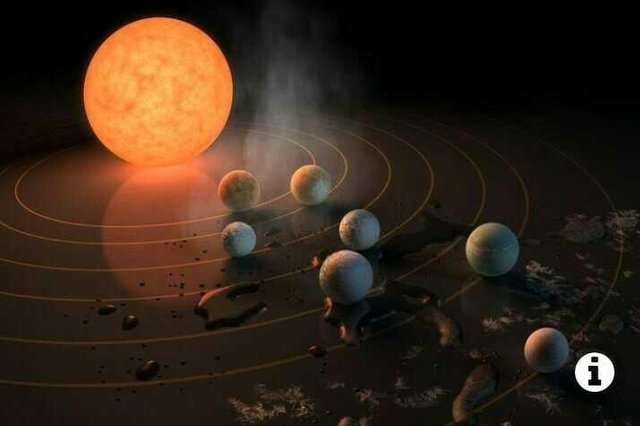Planet Trappist-1 Too Wet, Hope Looks for Alien in there run aground
During this time, the search for living things on alien planets often begins with the search for water. The extrasolar planet surrounding the Trappist-1 star was found to have water after researchers observed it from a distance of 39 light years.

Based on their size and density, these planets have earth-like sizes but are much lighter. This mass difference can only be caused by water that is heavier than gas, but is lighter and less dense than rock.
Unfortunately, the water that is on the planet around Trappist-1 is at a much-missed amount to sustain life.
The Earth itself may look like a wet planet because 71 percent of its surface is covered by water and 60 percent of our bodies are water. However, it turns out that water is only 0.02 percent of the total mass of the earth, while the rest are stones, organic materials, and others.
In contrast, the water content of several planets around Trappist-1 ranges from five to 10-15 percent of its mass or 250 times the water on Earth.
With that much water, these planets will have a far different sight from the earth or the watery moon like Enceladus and Europa.
The researchers explain that the water in Trappist-1 may be a thin layer above, while the bottom is solid like ice because of the ocean pressure above it. This ice serves as a mantle that protects its denser center.
Then in the absence of dry soil, the possibility of weather on these planets to produce important ingredients, such as the phosphorus which is the main material of DNA, is very limited.
That is, the possibility of living things on these planets, if any, to grow large enough that its existence can be detected from the earth is very small.
In such a case, you will not be able to distinguish the oxygen produced by life with oxygen produced by the planetary geological process.
However, this finding does not mean the end for research on the planets around Trappist-1. The focus of this paper is not about the search for life, but how these planets can form.
The existence of those close to the star, but still having ice is very interesting to learn. Because in our solar system, planets close to the star is usually dry, while the far wet to have ice.